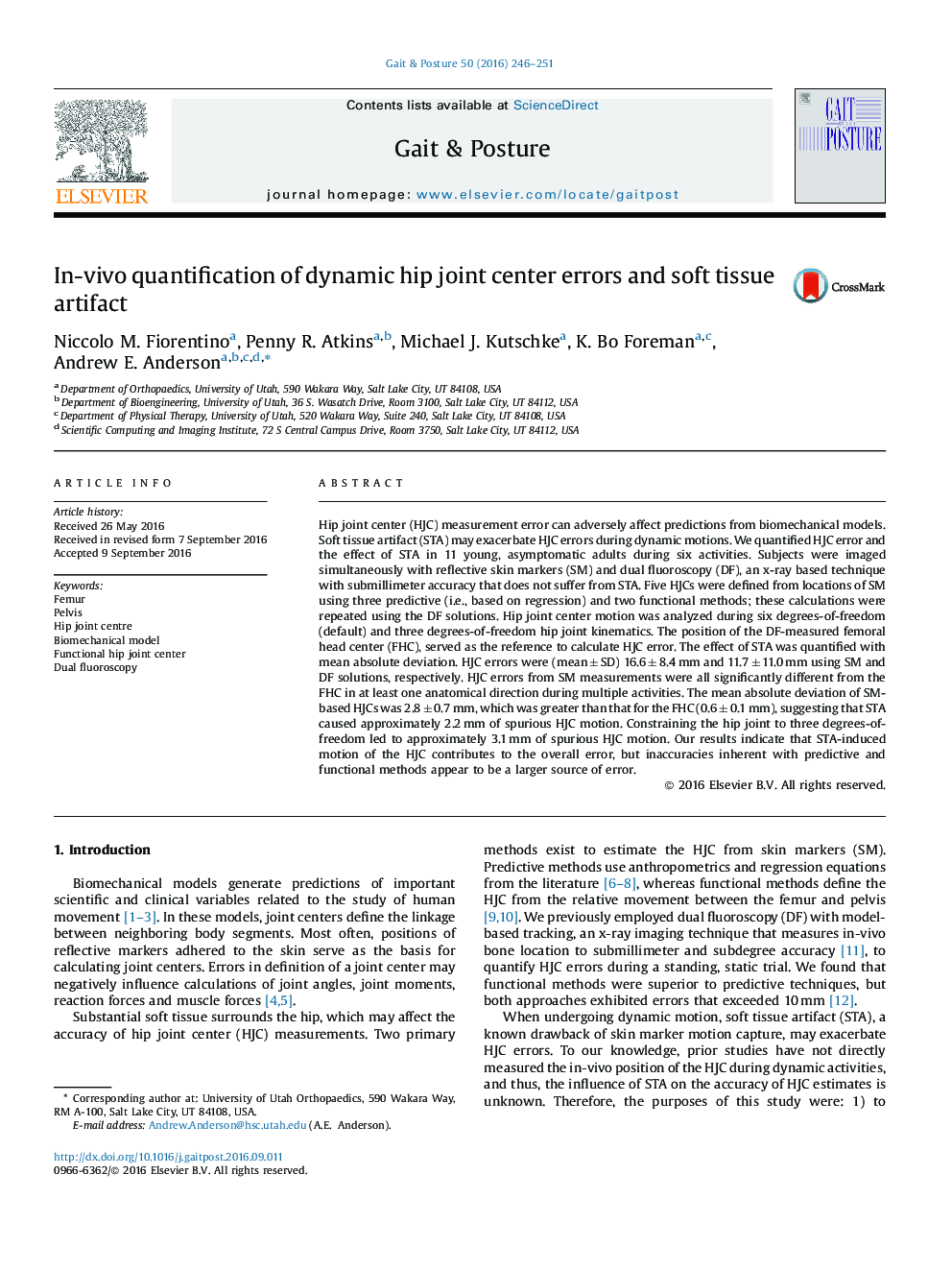| Article ID | Journal | Published Year | Pages | File Type |
|---|---|---|---|---|
| 6205356 | Gait & Posture | 2016 | 6 Pages |
â¢Hip joint center (HJC) errors and soft tissue artifact (STA) measured dynamically.â¢HJCs were generated from dual fluoroscopy (DF) and skin marker (SM) solutions.â¢HJC errors were 16.6 mm and 11.7 mm when using SM and DF solutions, respectively.â¢STA caused 2.2 mm (3.1 mm) of spurious HJC movement for 6 DOF (3 DOF) hip motion.â¢STA led to 17.2 ± 5.3 mm error in tracking the position of the pelvis.
Hip joint center (HJC) measurement error can adversely affect predictions from biomechanical models. Soft tissue artifact (STA) may exacerbate HJC errors during dynamic motions. We quantified HJC error and the effect of STA in 11 young, asymptomatic adults during six activities. Subjects were imaged simultaneously with reflective skin markers (SM) and dual fluoroscopy (DF), an x-ray based technique with submillimeter accuracy that does not suffer from STA. Five HJCs were defined from locations of SM using three predictive (i.e., based on regression) and two functional methods; these calculations were repeated using the DF solutions. Hip joint center motion was analyzed during six degrees-of-freedom (default) and three degrees-of-freedom hip joint kinematics. The position of the DF-measured femoral head center (FHC), served as the reference to calculate HJC error. The effect of STA was quantified with mean absolute deviation. HJC errors were (mean ± SD) 16.6 ± 8.4 mm and 11.7 ± 11.0 mm using SM and DF solutions, respectively. HJC errors from SM measurements were all significantly different from the FHC in at least one anatomical direction during multiple activities. The mean absolute deviation of SM-based HJCs was 2.8 ± 0.7 mm, which was greater than that for the FHC (0.6 ± 0.1 mm), suggesting that STA caused approximately 2.2 mm of spurious HJC motion. Constraining the hip joint to three degrees-of-freedom led to approximately 3.1 mm of spurious HJC motion. Our results indicate that STA-induced motion of the HJC contributes to the overall error, but inaccuracies inherent with predictive and functional methods appear to be a larger source of error.
